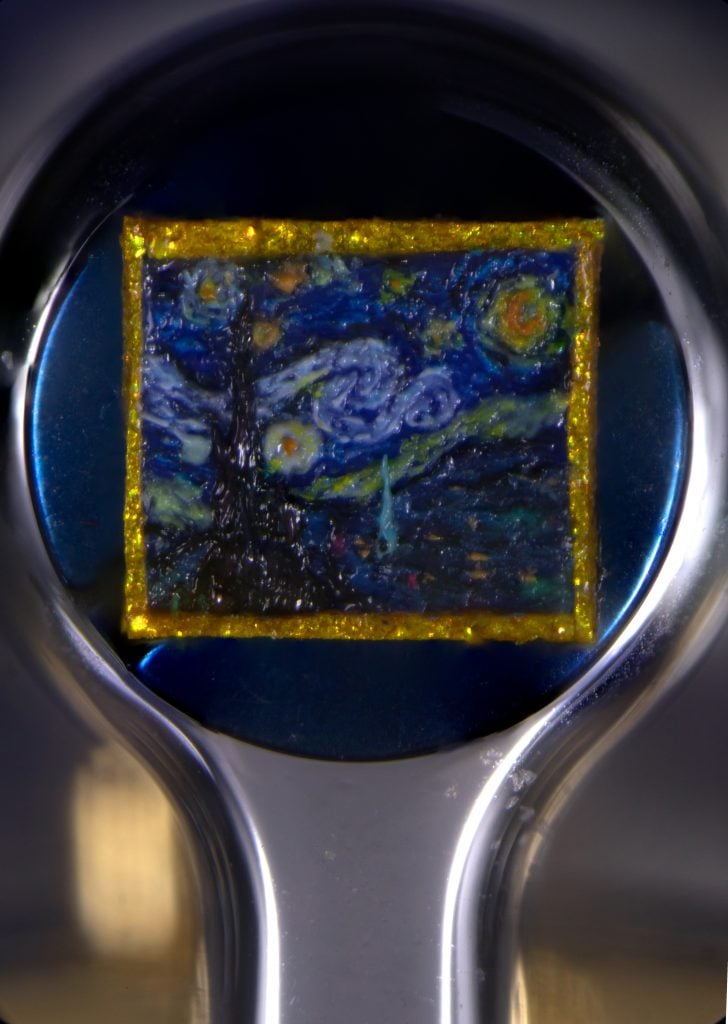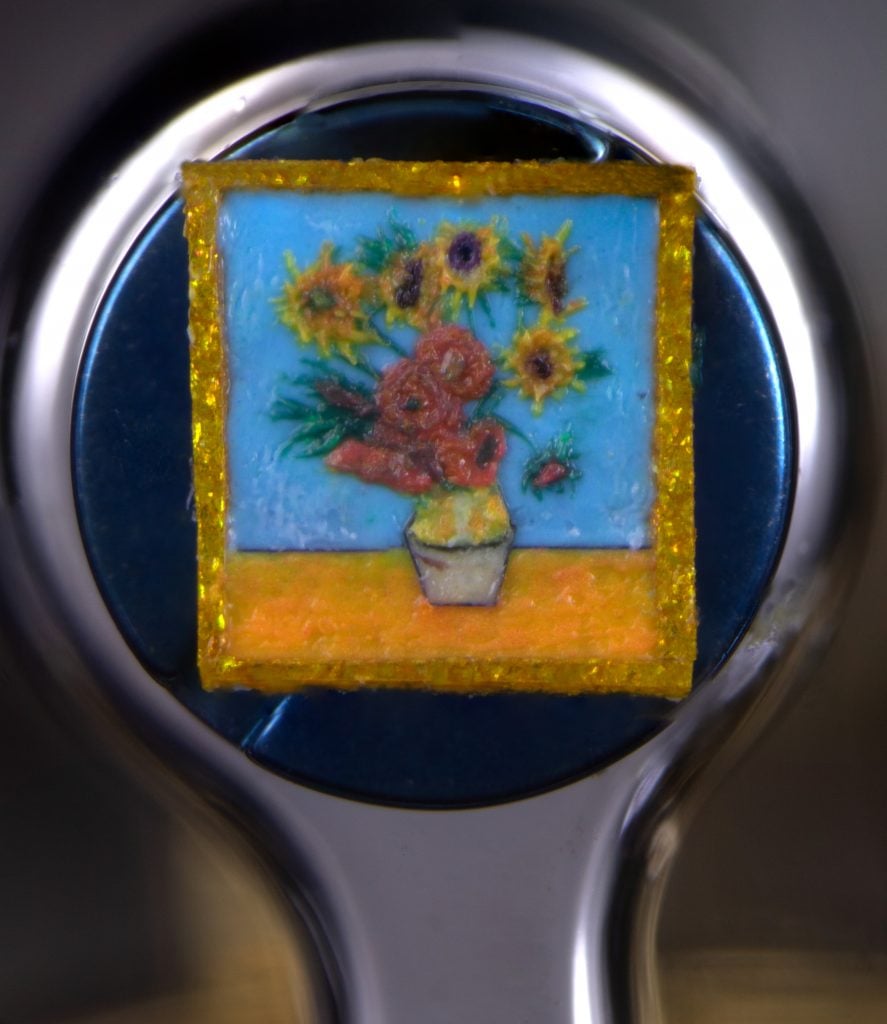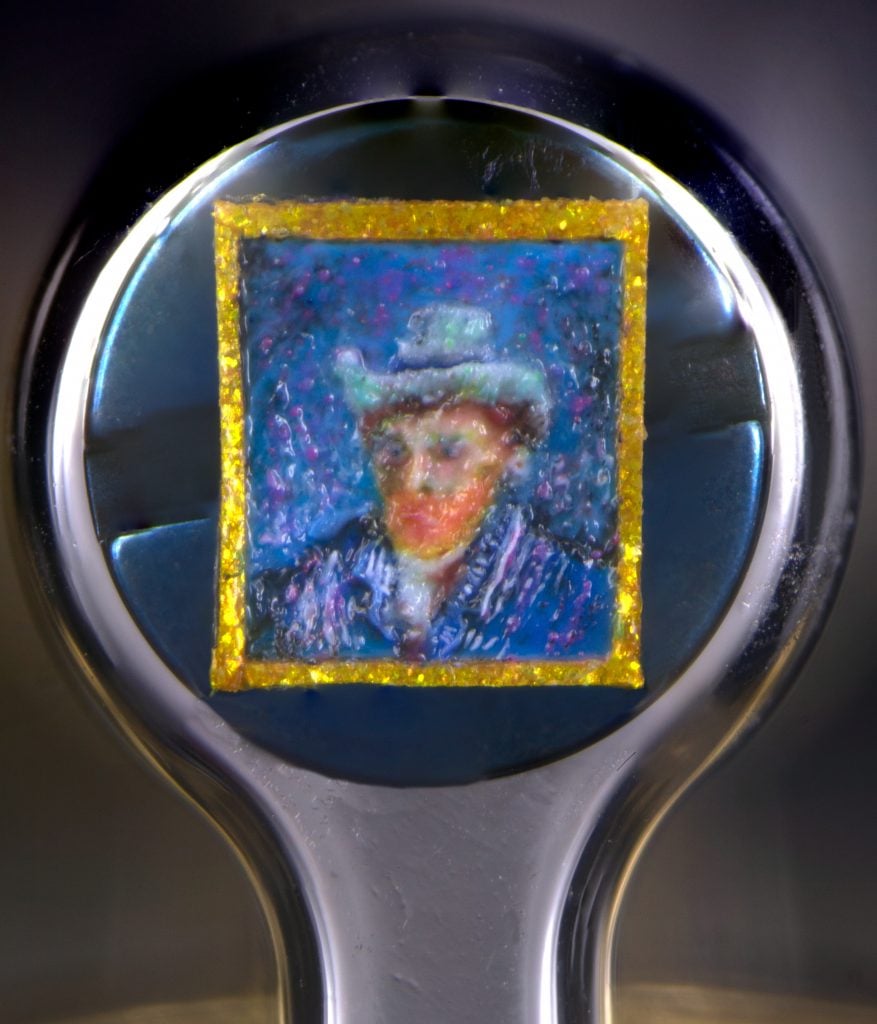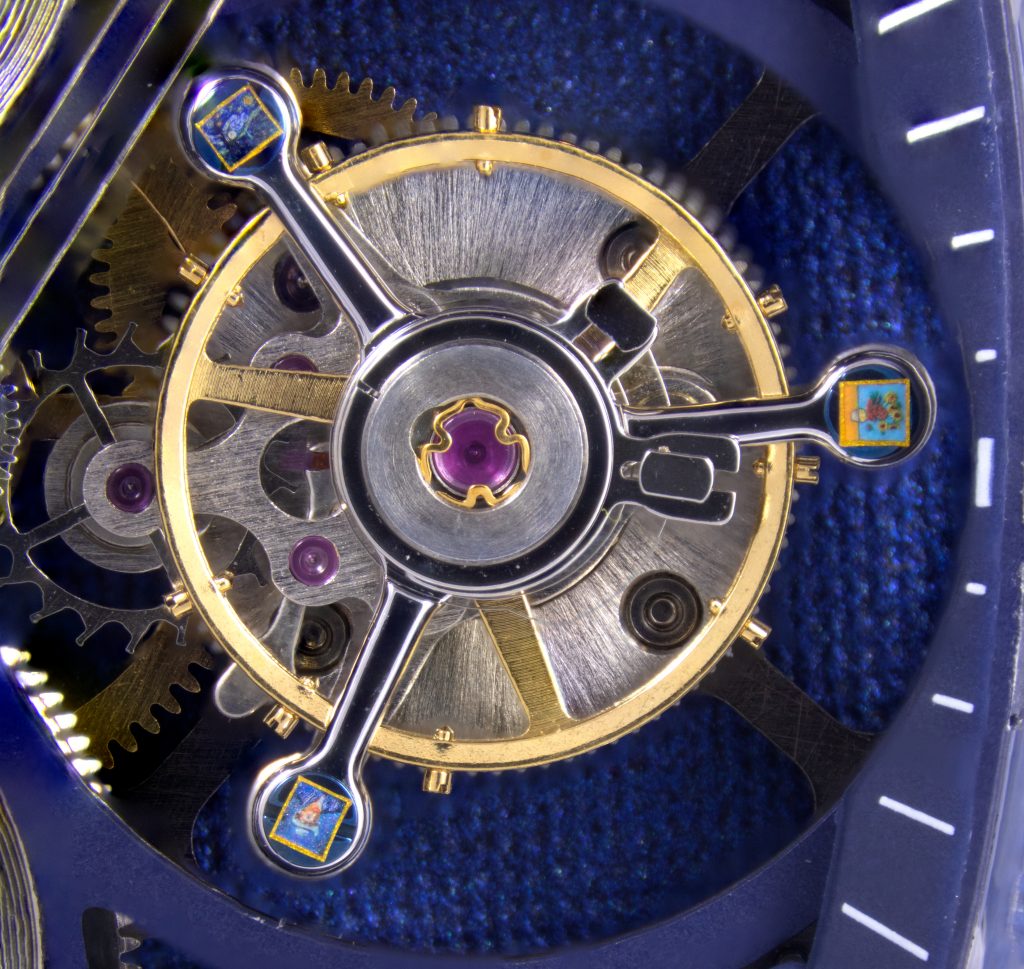Three of Vincent van Gogh’s most famous works have each been recreated at microscopic size – smaller than a period – inside a watch, making it the ultimate in wearable art.
The paintings-Starry Night (1889), Sunflowers (1888), and Self-Portrait in Gray Felt Hat (1887) – were each recreated by British artist David Lindon. Each measures about half a millimeter.
The timepiece is sold by Hammond Galleries for around $192,800. It is made of gold, micro pigments and nylon.
“David uses his engineering background to design and create the most appropriate displays which usually incorporate specialized lighting and built-in microscopes to give the perfect viewing angle,” Edward Hammond said in remarks emailed to Artnet News.

Microscopic recreation by David Lindon of Vincent van Gogh Starry Night. Courtesy of David Lindon

Microscopic recreation by David Lindon of Vincent van Gogh Sunflowers. Courtesy of David Lindon

Microscopic recreation by David Lindon of Vincent van Gogh Self-Portrait in Gray Felt Hat. Courtesy of David Lindon
Lindon, before becoming an artist, trained as an engineer with the UK Ministry of Defense to work on “complex instrumentation” and aircraft systems.
“Material manipulation is key because the laws of physics seem to change under high magnification,” Lindon told Artnet News. “A smooth, shiny gold ring under a microscope can have the color and texture of cut wood.”
The idea for the watch came about because both Hammond and Lindon wanted to create a “portable art gallery” that combined the intricacies of a watch with Lindon’s skill at creating detailed microscopic paintings to mark the 50th anniversary of the Van Gogh Museum.
“We approached the Vincent van Gogh Museum and found them to be encouraging and supportive,” Hammond said, adding that Lindon had recreated microscopic paintings by Van Gogh in the past “with worldwide acclaim.”

David Lindon’s Vincent van Gogh Masterpieces watch is pictured. Courtesy of David Lindon
Lindon said he developed an “intimate connection” with Van Gogh because he had to be able to look “into his mind” to effectively recreate his works on such a small scale.
“I have to master my emotions and harness them to express in color what he had in mind when he created his beautiful paintings,” Lindon said.
Lindon must overcome “monumental challenges” that push him to the limits of mental and physical endurance, he said. A single painting can take up to three months to complete, and with a bad film, months of work could fly “into unknown oblivion”.
“The invisible forces of static electricity can sweep through my designs like a powerful magnet that suddenly turns on and interrupts work with the snap of a finger,” he said.
“A cough or sneeze can have a similar effect to blowing art under the microscope, but inhaling a piece of art and getting it up your nose is another challenge.”

A small replica of Banksy Happy Choppers is illustrated. Courtesy of David Lindon
The tools Lindon uses must all be created by himself by hand before work can begin and tools often have to be redone several times when creating a work due to their fragile nature.
“When I sit down under the microscope, I must have prepared for the rigors ahead. Eating the right food, having a well-groomed body and a clear, focused mind,” Lindon said.
“I control my movements with the precision of a brain surgeon. The mind shifts to a heightened level of focus, more than most people are capable of. I work closely with the microscope, treating it as an extension of my body.
Lindon said humans have always been fascinated by scale, and each generation has pushed the boundaries of what’s possible.
“To me, the basic truth is that art has to be handmade to be appreciated,” he said. “My art should have the same artistic value whether life-size or microscopic.”
Hammond said the watch will be the first in a series of watches featuring microscopic paintings recreating the works of Picasso, Dali and Warhol. Lindon has also completed an order for a private client to reproduce a Banksy triptych which he says will be revealed in early September.
Lindon has also created 24 new artworks that will be available on a world tour, including The smallest zoo in the world.
Follow Artnet News on Facebook:
Want to stay one step ahead of the art world? Subscribe to our newsletter to receive breaking news, revealing interviews and incisive reviews that move the conversation forward.
